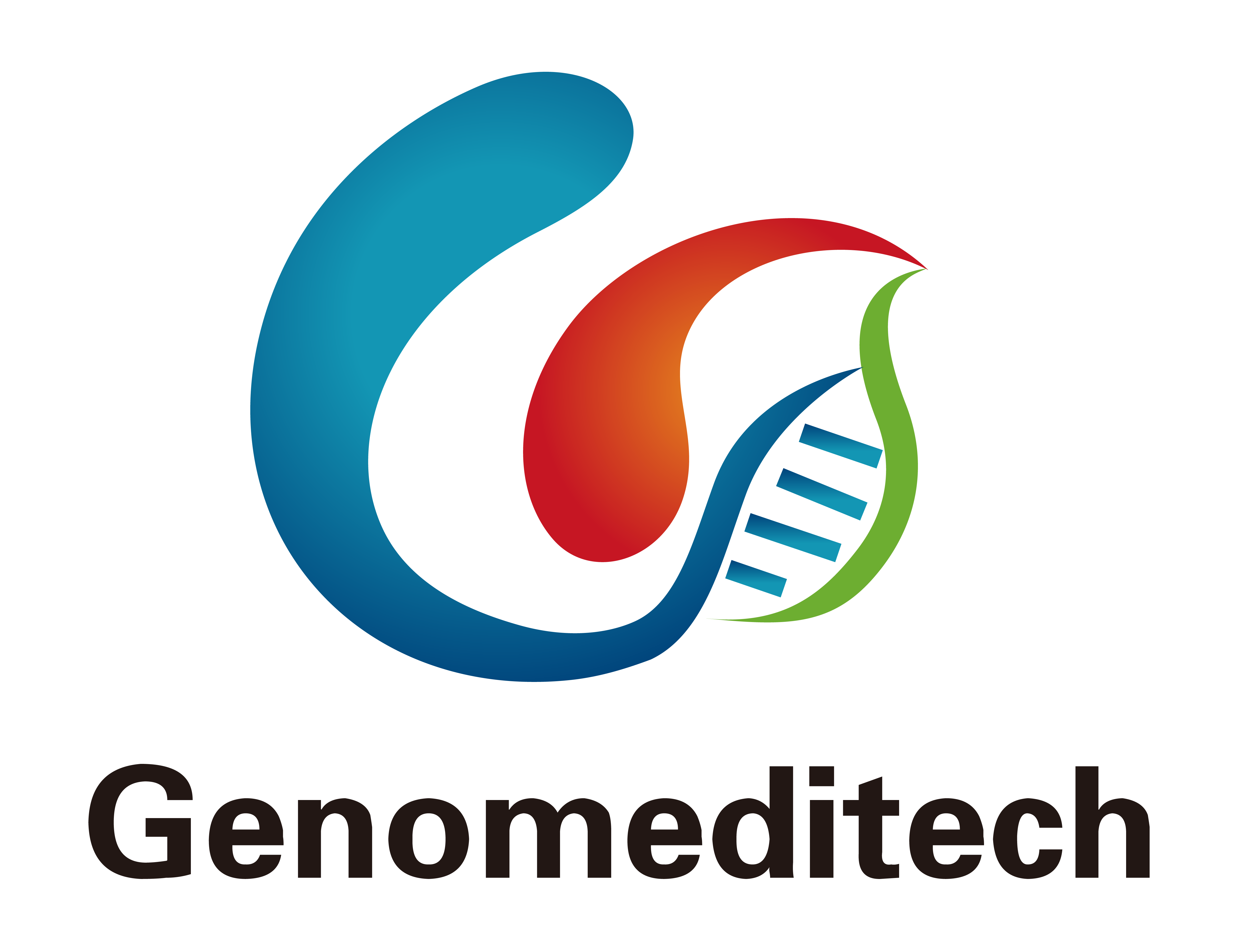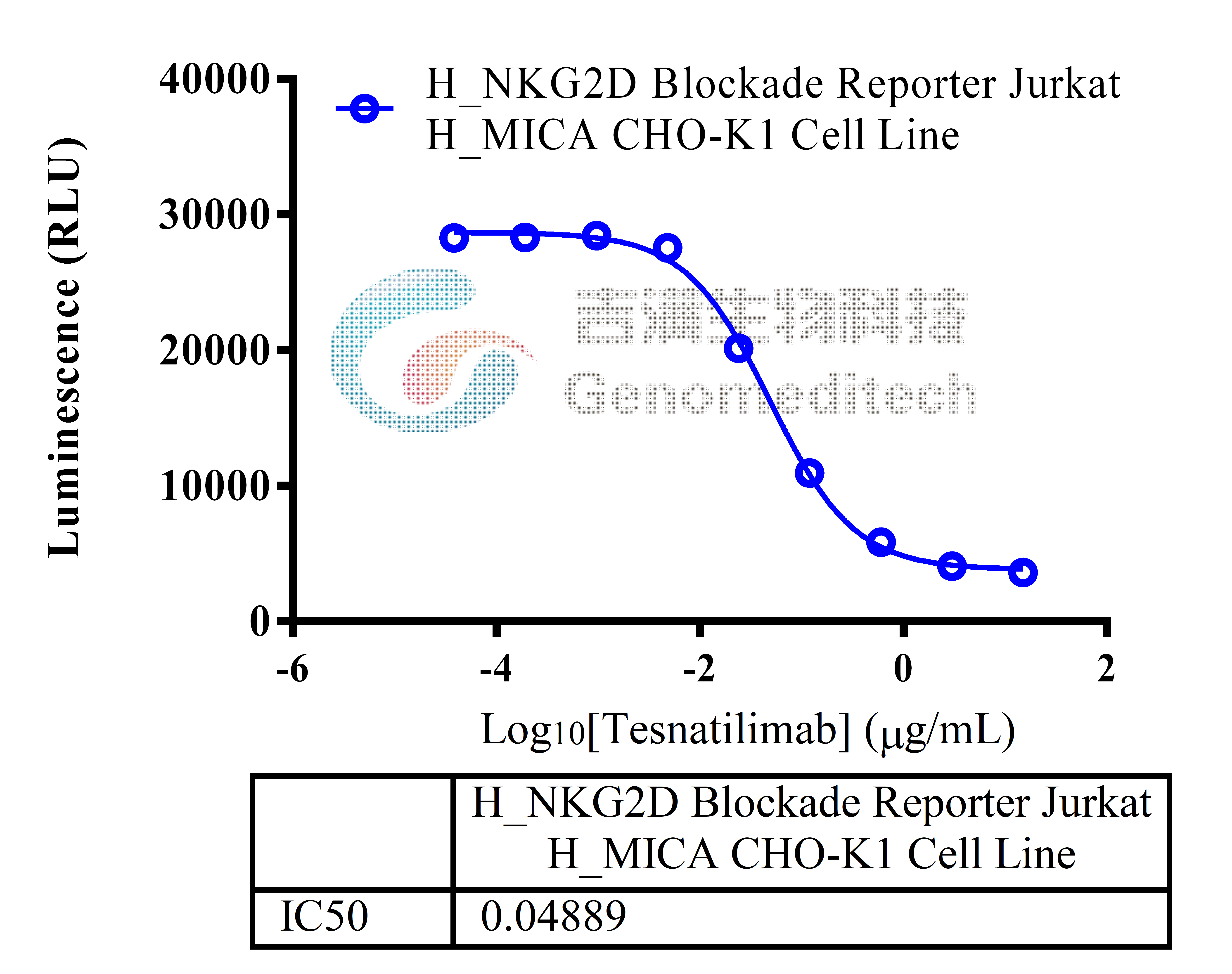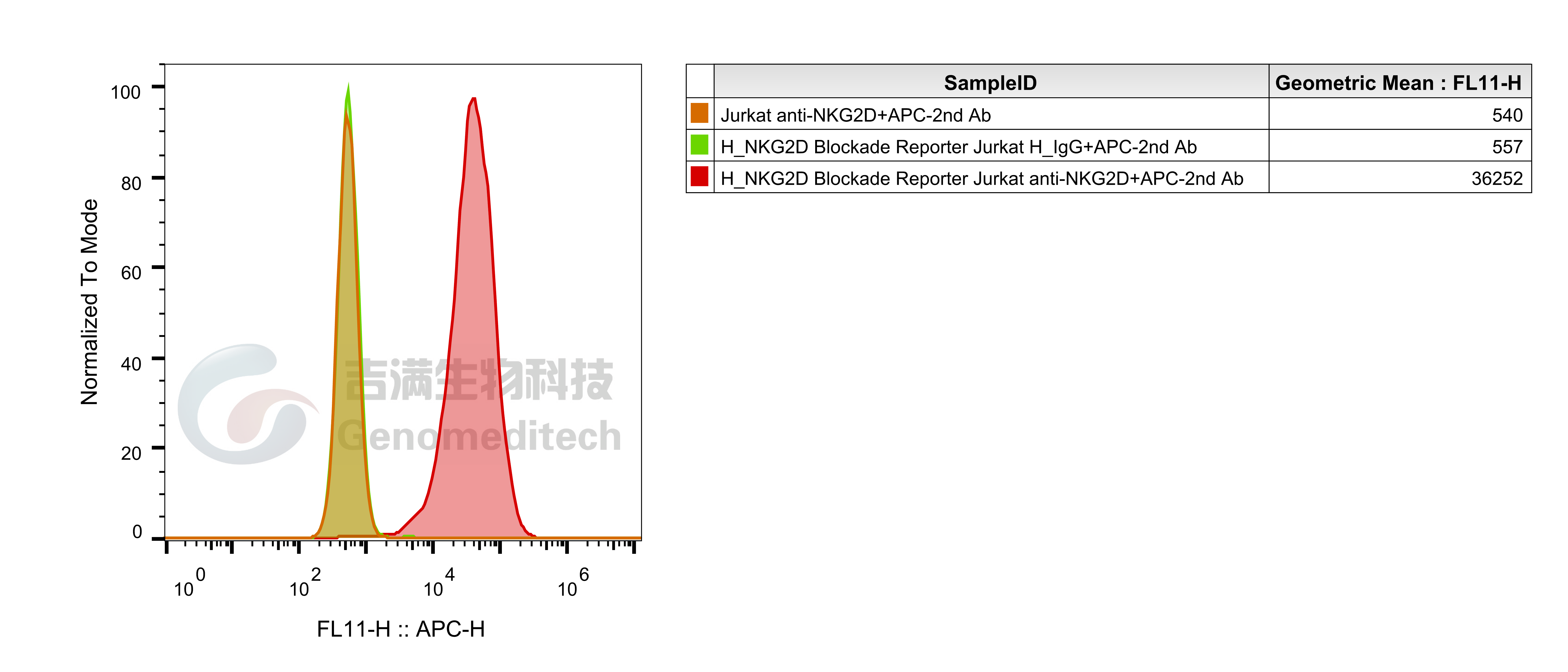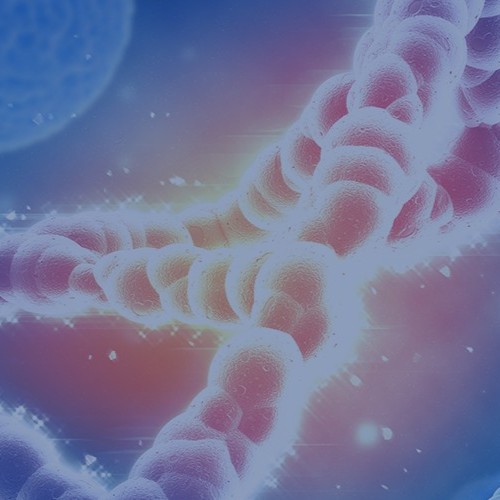| Cat. No: GM-C27755 Product: H_NKG2D Blockade Reporter Jurkat Cell Line NKG2D is an activating receptor (transmembrane protein) that belongs to the C-type lectin-like receptor NKG2 family. It is encoded by the KLRK1 (killer cell lectin-like receptor K1) gene, which is located in the NK gene complex (NKC) on chromosome 6 in mice and chromosome 12 in humans. In NK cells, two main receptors control the balance between cellular activation and inhibition: one recognizes MHC I (HLA-A, B, C), and the other recognizes non-MHC I molecules. Receptors that recognize MHC I are NKG2A and NKG2C, while NKG2D and NCR primarily recognize non-MHC I molecules. NKG2D is a type II membrane protein, expressed as a dimer on the cell membrane. The ligands for NKG2D primarily include MICA/MICB and ULBP1-6. When ligands bind to NKG2D, the YXXM motif on the DAP10 protein can recruit GRB2 and PI3K, thereby activating PLCγ and subsequently activating NK cells. H_NKG2D Blockade Reporter Jurkat Cell Line is a clonal stable Jurkat cell line constructed using lentiviral technology, constitutively expressing NKG2D chimeric receptor and some adapter membrane molecules, along with signal-dependent expression of a luciferase reporter gene . When MICA binds to NKG2D, it activates downstream signaling pathways, leading to the expression of luciferase. Blockade antibodies can inhibit this signal transmission. The luciferase readout represents the activation level of the signaling pathway and can thus be used for evaluating the in vitro effects of neutralizing antibody of NKG2D. | 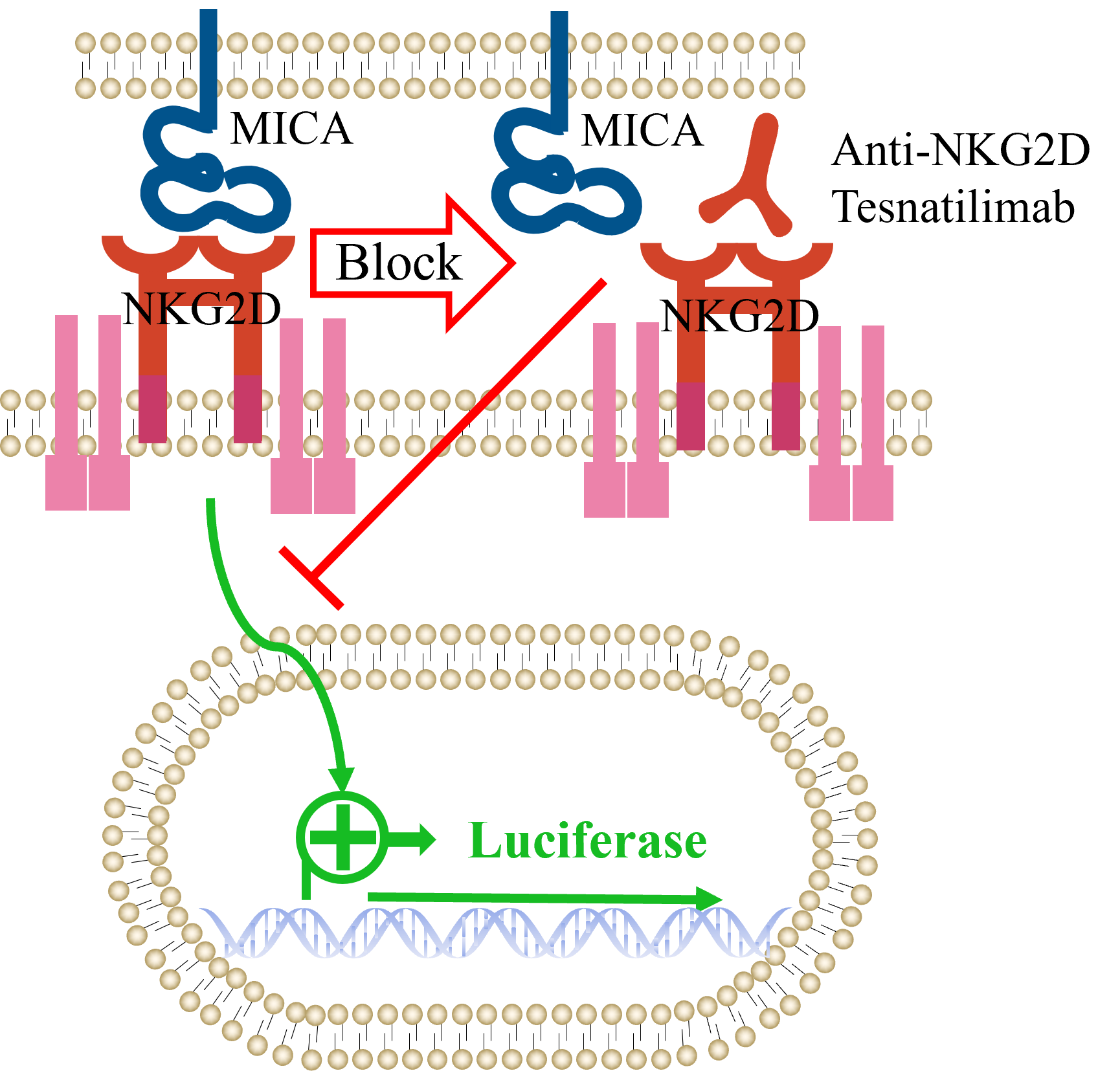 |

